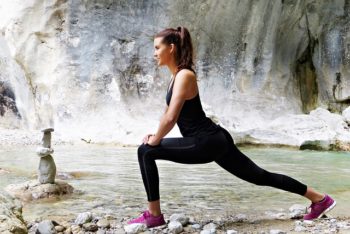 STRETCHING YOUR WAY TO HEALTH
STRETCHING YOUR WAY TO HEALTH
Hello everyone and Welcome to another installment of WELLNESS WEDNESDAY.
For many of us, it’s been a long winter. We’ve had more rain, snow and wind this year than we’ve had in many years past. And of course, that means that getting outside for that much-needed fresh air and exercise has been difficult, if not impossible.
Yet, we don’t have to depend on the outdoors to enjoy a good physical work out. We can work out right in the warmth and comfort of our own home. Moreover, as I always say, working out doesn’t have to be strenuous to be effective. All we have to do is move. And, stretching a little will do the trick.
Remember your first Physical Education class in elementary school? From the very beginning, people have been telling us that stretching is good for us. It helps us warm up. It helps us cool down. And, it helps prevent injuries.
Just so you know, there are several types of stretches, including dynamic, static, ballistic, passive, active and PNF, which is used in rehabilitation.
The most common, however, are dynamic and static. The first is usually done before exercise to get our muscles ready and warmed up. These are active movements that stretch our muscles and prepare them for activity, but they are not held in position for any length of time.
The second, static, is typically done after exercise or on its own without other exercise. This involves holding a stretch in a comfortable position for a longer period of time.
But stretching – even if it’s not a prelude or a postlude to any other type of physical activity — is a great exercise all by itself. Just a few minutes of targeted, static stretching can do wonders for our physical and mental health.
FLEXIBILITY
The obvious benefit of stretching is, of course, the improvement it brings to our range of motion and muscle flexibility. We’re better able to perform everyday activities with ease. We develop more freedom of movement. And, we delay the reduced mobility that can come with aging. This also helps us avoid injury, tripping and falling.
STAMINA
Stretching loosens our muscles and tendons, and relieves muscle fatigue as it increases blood flow. Stretching ensures more oxygen and nutrients reach our muscles and body tissues. And, this improves our athletic performance and our endurance. Feeling tired? Just stand up and do a few stretches. It’s great for revitalizing our energy levels.
BLOOD CIRCULATION
By increasing the blood flow to our muscles, stretching also helps reduce soreness and improves our recovery time after strenuous activity. Better circulation helps promote cell growth and organ function. Our hearts don’t have to work as hard; our blood pressure becomes normalized and our cholesterol levels stabilize.
POSTURE
Stretching helps lengthen tight muscles. It allows our muscles to loosen up so they can remain in their intended position within our body. Stretching the lower back, chest and shoulders helps keep our muscles strong and our spine aligned. There is less slouching, we stand up taller and hold our heads up higher.
PAIN
A few good stretches can help relieve pain from sore muscles, tendons and body tissues. As our circulation improves and more oxygen and nutrients are pumped into our muscles, body tissues repair themselves. Proper stretches also can help prevent pain by strengthening our muscles and reducing our risk of injury and future pain.
STRESS RELIEF
When we feel stressed, a big part of the problem is that our muscles are tense. Our muscles always tighten up in response to emotional and physical stress. And, this typically affects our neck, shoulders and upper back. Stretching will relax our muscles and even reduce the frequency and strength of tension headaches. No doubt about it, a little stretch will go a long way in relieving stress.
MENTAL OUTLOOK
 It’s not just our physical bodies that relax with targeted stretching. So do our minds. A stretch alone or combined with deep breathing exercises or closed-eyed meditation can give us a mental break when we most need it. Stretching releases our “feel good” chemicals of serotonin and dopamine, both of which provide us with a sense of euphoria and tranquility. Our mood improves and our outlook becomes more positive.
It’s not just our physical bodies that relax with targeted stretching. So do our minds. A stretch alone or combined with deep breathing exercises or closed-eyed meditation can give us a mental break when we most need it. Stretching releases our “feel good” chemicals of serotonin and dopamine, both of which provide us with a sense of euphoria and tranquility. Our mood improves and our outlook becomes more positive.
Before exercising anything, of course, exercise caution. Always check with your primary physician first and then choose the stretches that will address your specific issues. Once you know which stretches will be good for you, you may want to consult a trainer at your neighborhood gym or research an online instruction class.
They may be simple, but don’t underestimate the value of a few good stretches. You’ll have more energy, better coordination and a more positive outlook to help you enjoy every day in optimum health and wellness.
Once again, thanks for joining me everyone. Until next time, stay in GOOD HEALTH and . . .
TAKE THE COURSE AND TAKE CHARGE!



Leave a Comment